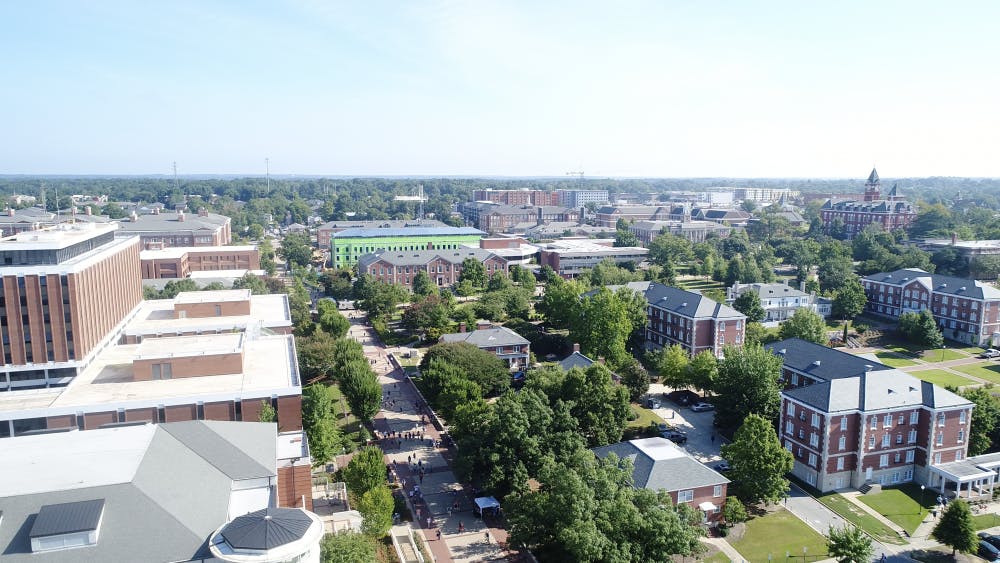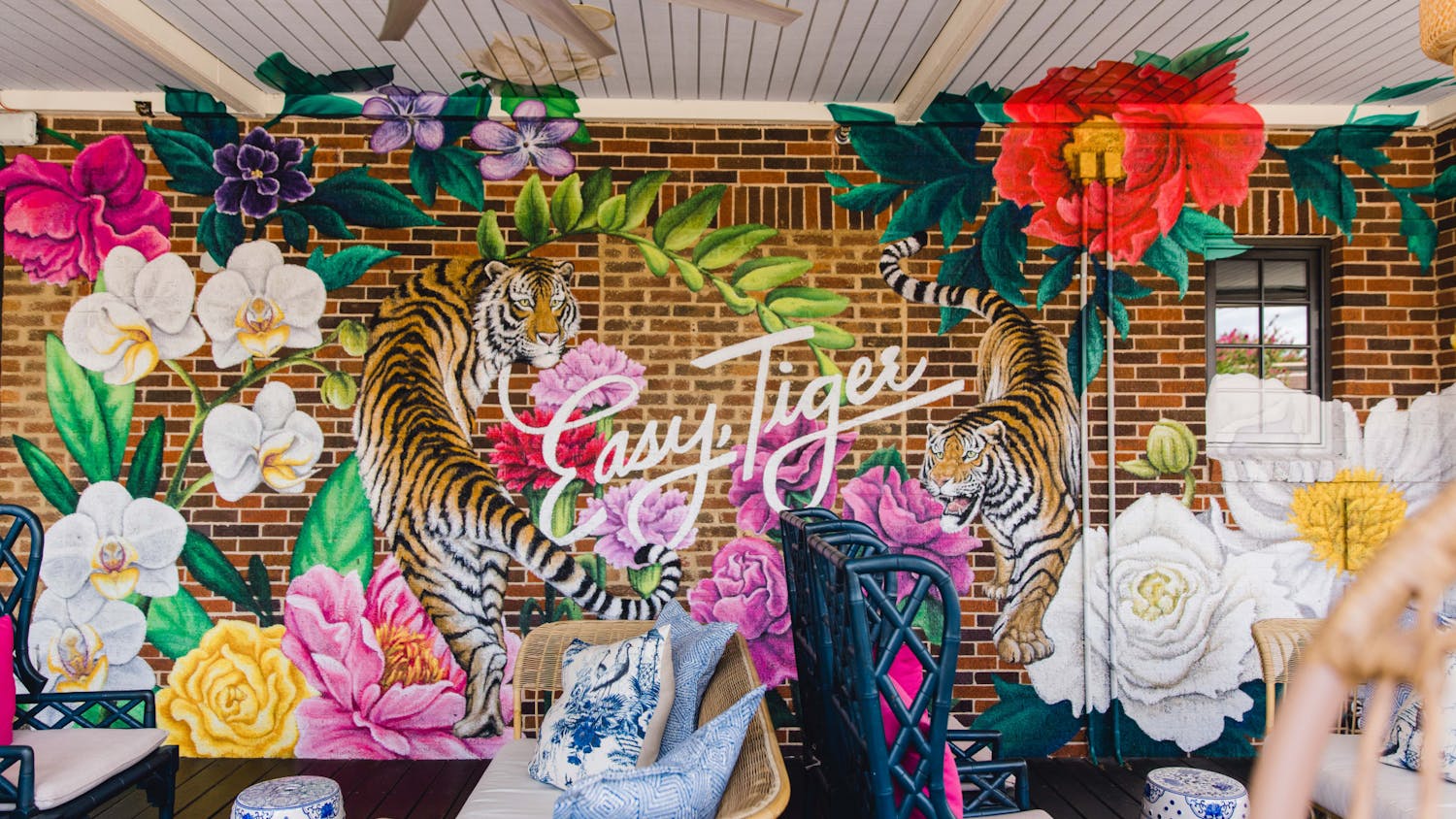The Auburn University Senate met on Tuesday afternoon over Zoom to speak about the fall 2020 semester and how recent events are impacting campus. Some discussion focused on the University's revised fall academic calendar, as well as President Jay Gogue's hopes at better resolving 'racial inequities' on campus, but much of the meeting covered how the University plans to ensure safe health practices and social distancing when students and faculty return en masse.
One of the main tools that Auburn will be implementing for the fall semester in order to monitor the health of students is a contact-tracing, symptom-tracking app which is being developed in conjunction with the University of Alabama at Birmingham and other higher education institutions in Alabama.
This app will require students to answer questions about their symptoms, as well as take their temperature each day, according to Provost Bill Hardgrave. All students will be asked to bring a thermometer with them when they come back to campus for this purpose.
“The answers to those questions will provide a passport, if you will, a green screen or a red screen,” Hardgrave said. “That screen then determines how [the student] can move around campus. If they get a red screen, they would be directed to the next step; that could be contacting the [Auburn University Medical Clinic] here on campus, it could be some other action.”
According to Hardgrave, students who receive a red screen on the contact-tracing app would then be able to contact their professor to notify them of their absence from class, which would count as excused. All faculty and staff will be required to participate in this screening as well.
If there is an outbreak, this app would then be used to help students notify others who had come in contact with those infected in order to mitigate the spread of the virus.
Also, all classes will be recorded, regardless of whether they are in-person, online or a mixture of the two. This is to allow students who miss class due to quarantine, sickness or other factors to be able to stay up to date with their classes.
On the topic of safety measures, Hardgrave mentioned that a University policy regarding the use and implementation of face coverings will be released soon and will be adopted and used to guide the use of face coverings in the classroom. There will be sanitizing wipes in classrooms that students and faculty can use, as well as a throughout cleaning overnight.
“Classrooms will practice safe social distancing, and we’ll be working on diagrams for marking those classrooms,” Hardgrave said. “Those will be used for face-to-face or blended or Hyflex instruction so that we practice safe social distancing.”
Hyflex, or Hybrid-Flexible, is a relatively new instruction model that has become a popular option for institutions looking to reopen this summer and fall, which Auburn will first use in its second summer mini-semester beginning June 29.
Faculty members are also being asked to prepare contingency plans ahead of time in the case of emergency.
“One of the things that we will be asking all faculty to do is identify a faculty backup in the case that a faculty member has to be quarantined,” Hardgrave said. “We’re also asking each faculty member to have, in addition to their regular syllabus, what we call a 'syllabus B.'”
This faculty backup would be able to step in for the primary faculty member and continue teaching and instructing their class. The syllabus B is a preemptive measure outlining the structure of classes if external conditions force Auburn to pivot to an all remote environment.
Following this information, Hardgrave and Ron Burgess, the University's executive vice president, then took questions from faculty members.
Jennifer Brooks, associate professor of history and director of graduate studies, asked for more specifics to be given in regards to the implementation of face coverings. She also spoke to the recent increase in COVID-19 positive cases in Alabama and the effect that it could have on the safety of returning to campus in the fall.
“Many of us as faculty are not comfortable with returning to campus until we actually require students to wear masks in the classroom and in our office buildings,” Brooks said.
Burgess responded by saying that Auburn would follow the guidelines set by the state of Alabama first and foremost; guidelines which state that masks are strongly encouraged on campus. He then said that in certain areas, masks would be required, such as in the library, the Student Center and the student health center. Masks would also be required in all classrooms where the professor listed in the syllabus that a mask was a requirement.
Students, faculty and all employees will be required to have a mask on their person at all times, Burgess continued, “...in the case that a situation presented itself that was not covered for some emergency so that masks could then be put on.”
Michael Baginski, associate professor of electrical and computer engineering, asked a question concerning class sizes and how social distancing would be forced in the classroom.
“Are there going to be some mandatory guidelines given so that a class that would normally accommodate, say, 45 people then be only allowed to accommodate half that?” Baginski asked. “People have concerns about that, I believe.”
Hardgrave assured that safe social distancing would be practiced, saying the amount of students that could be safely put in a classroom depends entirely on its layout.
“We’ve been getting some guidance, for example, from Purdue, that just used an across the board [approach], whatever the class size it is, 50% of that will be max capacity,” Hardgrave said. “So … do we do something like that, or, do we do something where we use a six foot radius and look at each classroom.”
Hardgrave continued by saying that when Auburn decides what method will be used to determine the proper use of classrooms in order to practice safe social distancing, guidance will be provided to faculty and students in the form of a seating chart posted outside the classroom or physically marking the seats in the classroom to indicate which of them could be used.
Senator Richard Sesek, associate professor of industrial and systems engineering, asked if Auburn was going to mass test the student body as well as the faculty for COVID-19, and whether there would be a cost associated with that.
Currently, Auburn is not able to amass the 38,000 tests that would be required in order to test each student and faculty member, according to Burgess, who said mass testing would not be able to be completed in a timely fashion.
“We’re working through … it is not insignificant in terms of the cost, Burgess said.” Right now, it’s about $85 a test. Right now, we’re going to require students, we think, to come back saying they’ve had a test within seven days, [and for] those that haven’t, we would do some testing on them.”
Burgess then continued by going over the options for testing on a smaller scale, like random testing in groups of 100 for students and faculty.
Hannah Baggett, assistant professor for the College of Education, shared a question asking how contact workers who come into contact with students often, such as cleaning staff and dining services, would be adequately protected.
Burgess responded by saying that these workers would be tested and be using the same contact tracing app that students and faculty would use. In terms of dining, buffets and similar dining options will no longer be possible.
Michael Stern, associate professor of economics, asked about increasing availability for classes and distancing students by making use of different time slots for classes.
“I wondered if there had been any thought to changing the way we have times and everything scheduled … using the evenings or weekends and so forth, to spread out our students and our classes,” Stern said.
Class times had not been changed up to this point due to the fact that most students have already completed pre-registration for classes in the Fall, according to Hardgrave. Changing times now could create issues with students’ schedules, he said.
“As we get some guidance from the faculty on how they plan to teach their classes and the classroom capacity, then we can look at adding some classes in those times where we have availability,” Hardgrave said. “This [allows] students to then modify their schedule in the delivery method that they want based on the availability of the seats.”
Do you like this story? The Plainsman doesn't accept money from tuition or student fees, and we don't charge a subscription fee. But you can donate to support The Plainsman.





